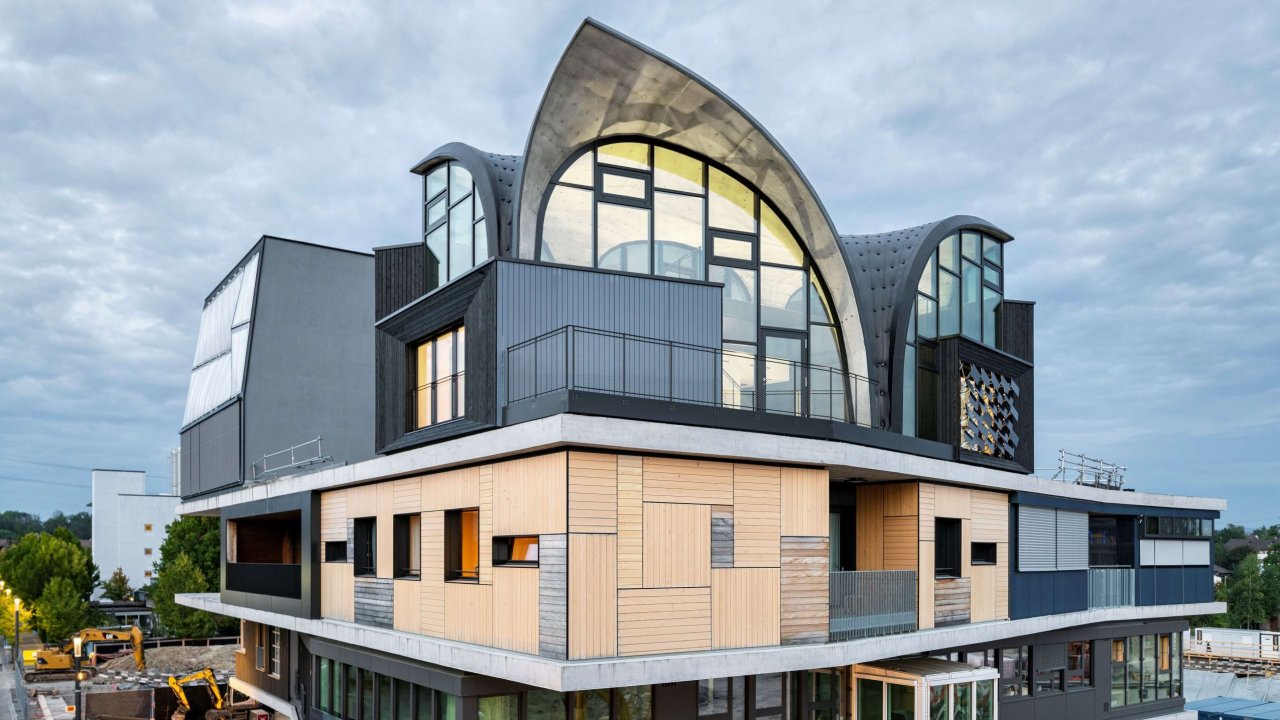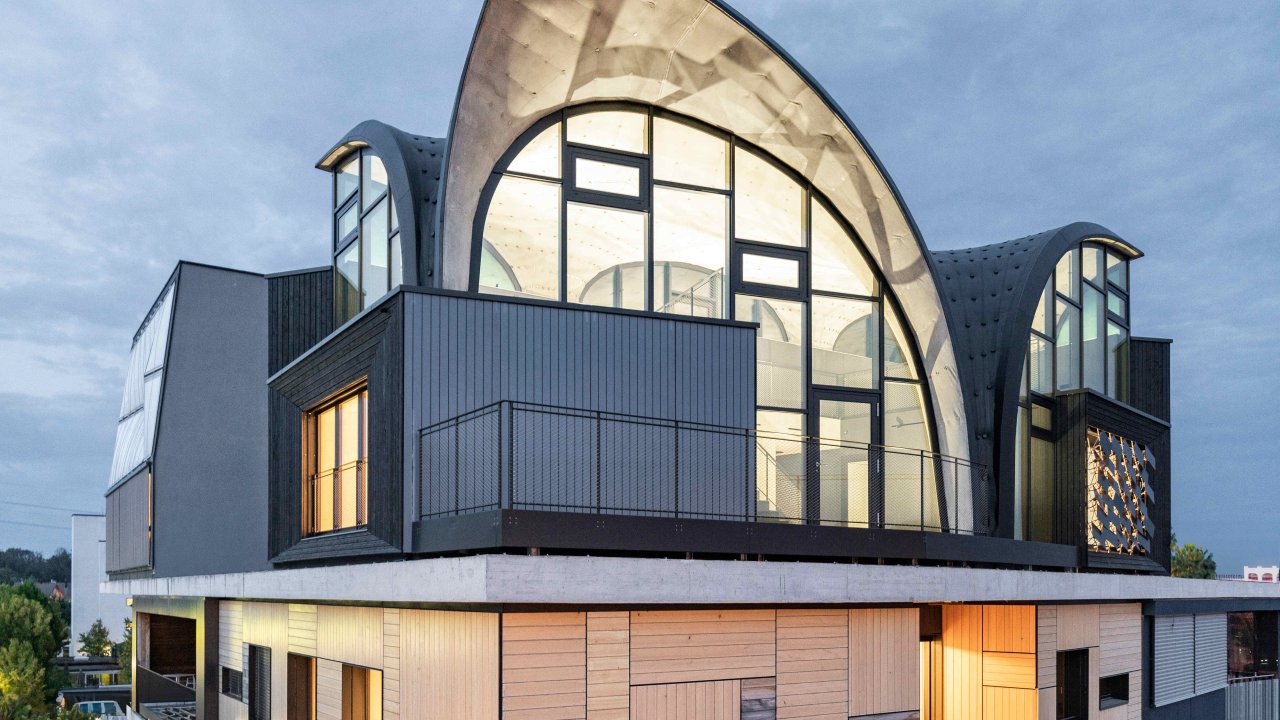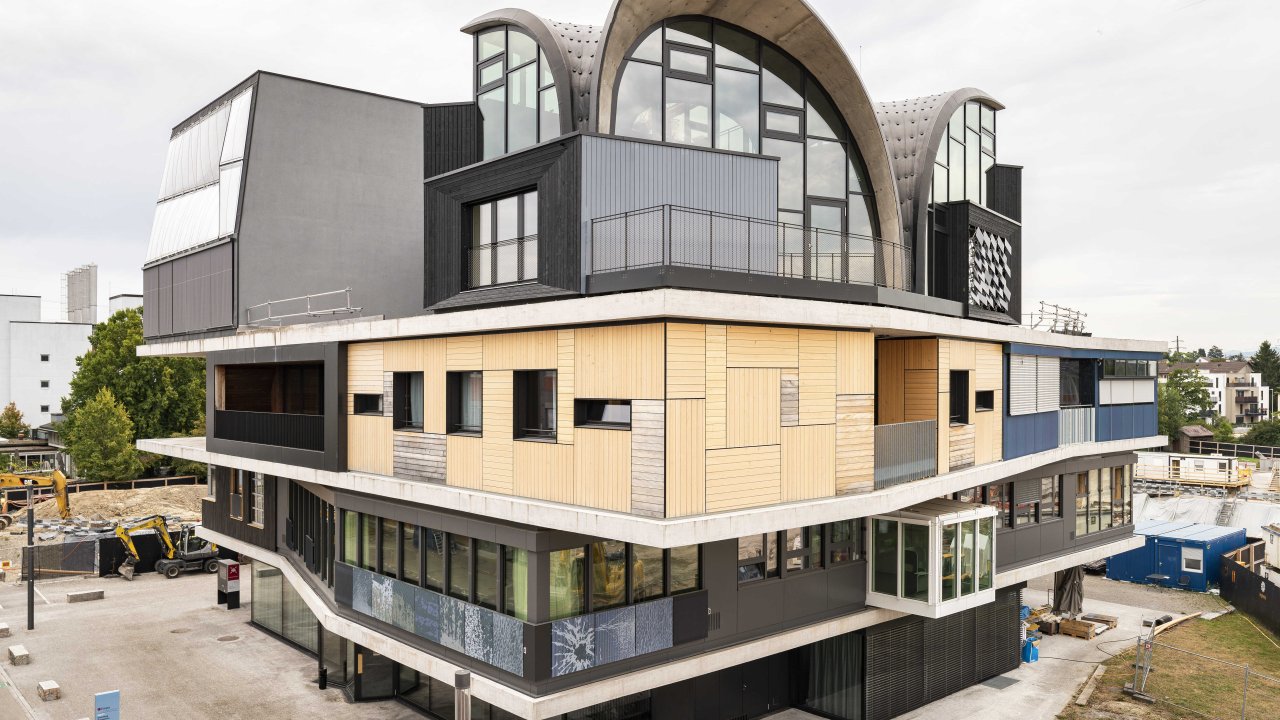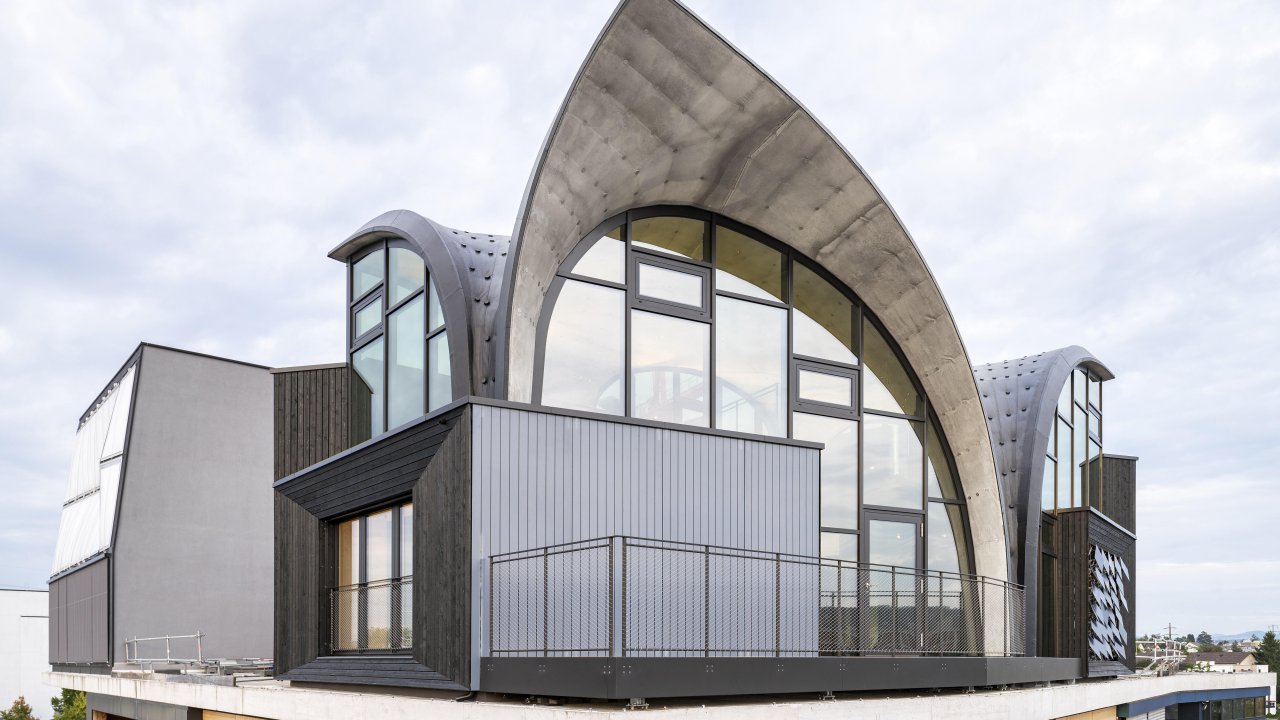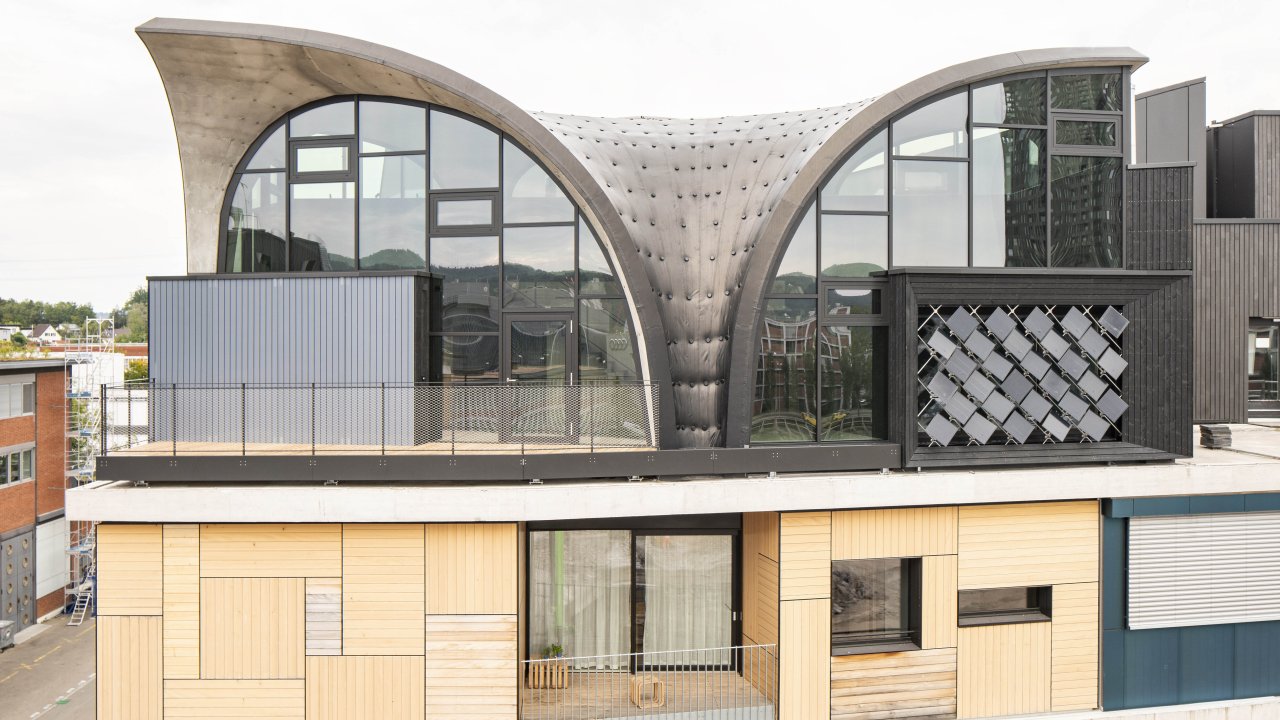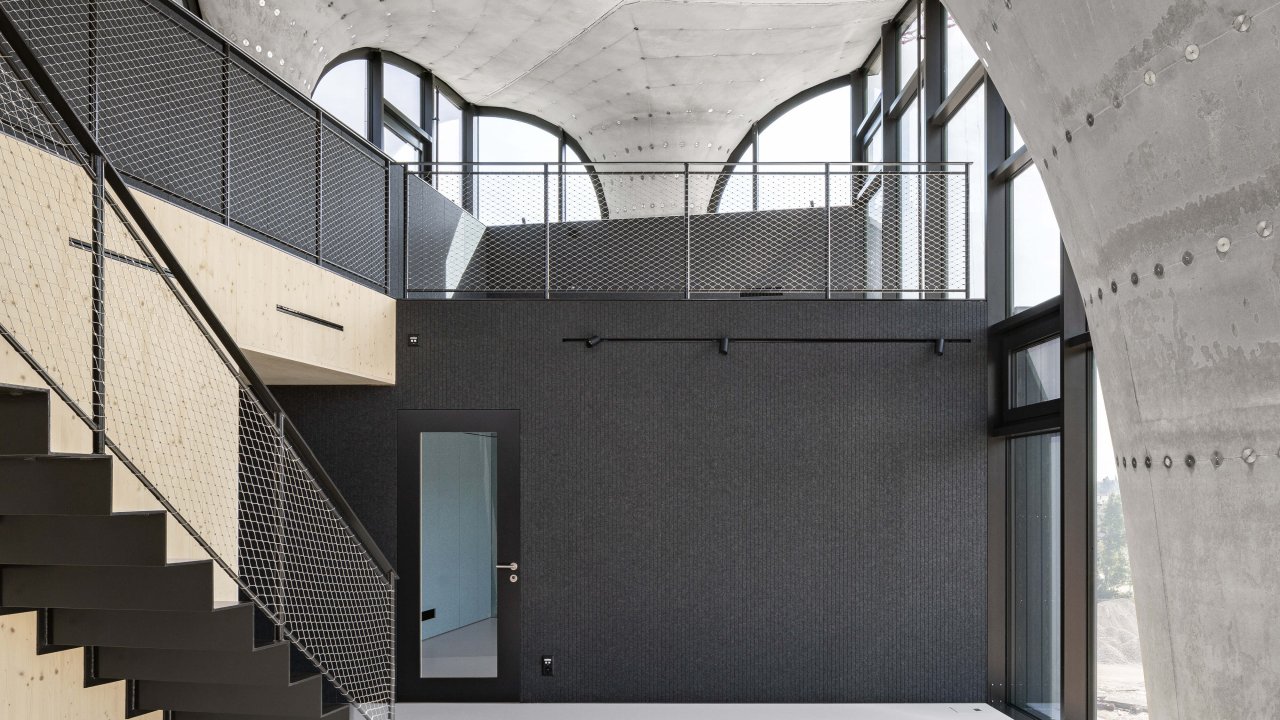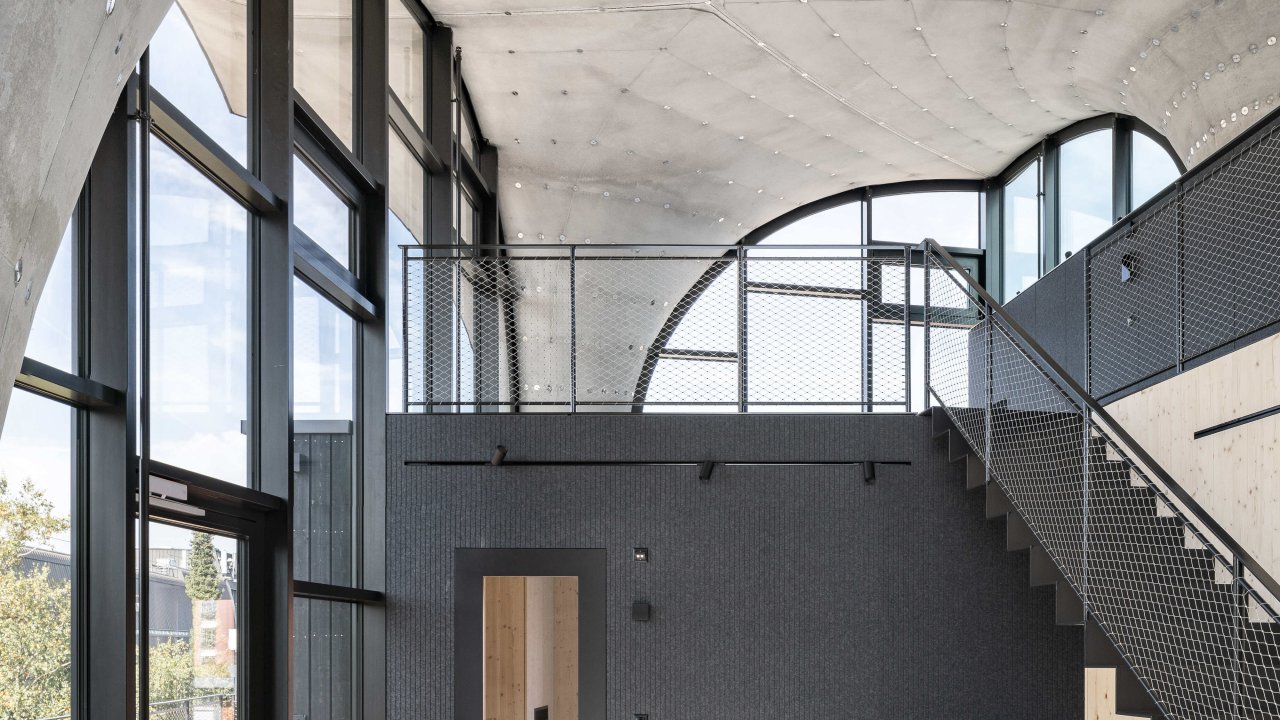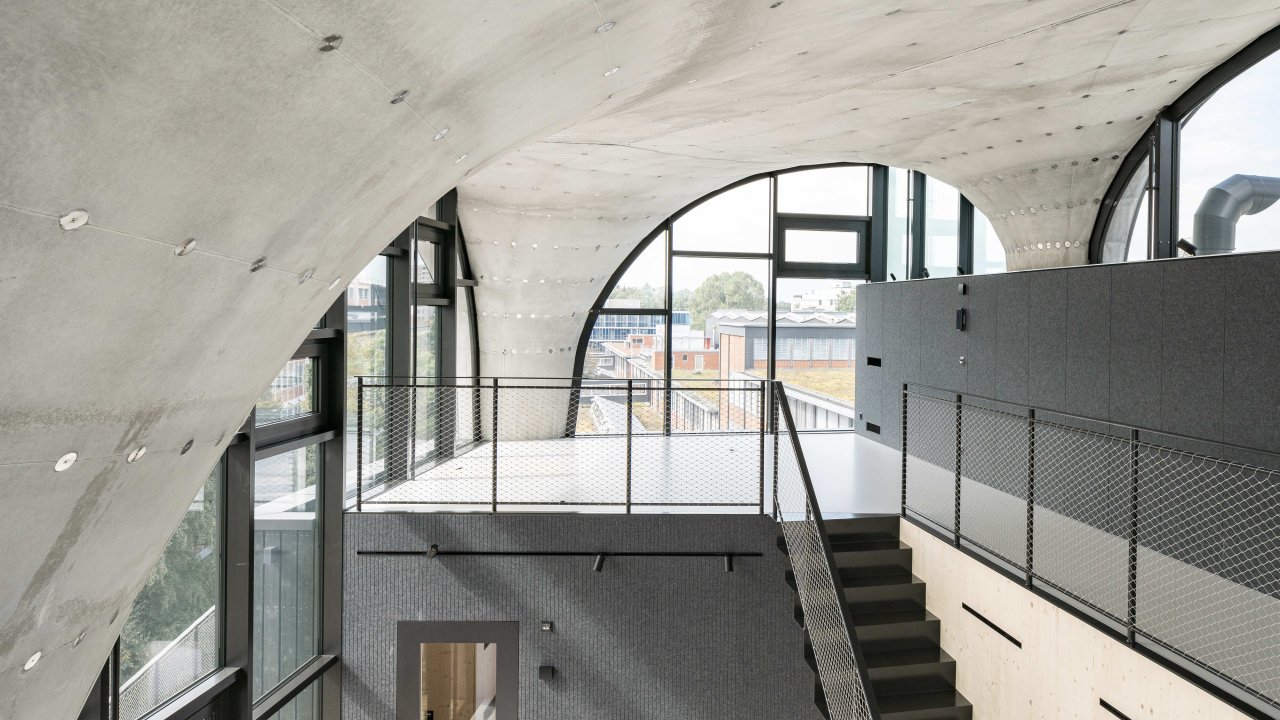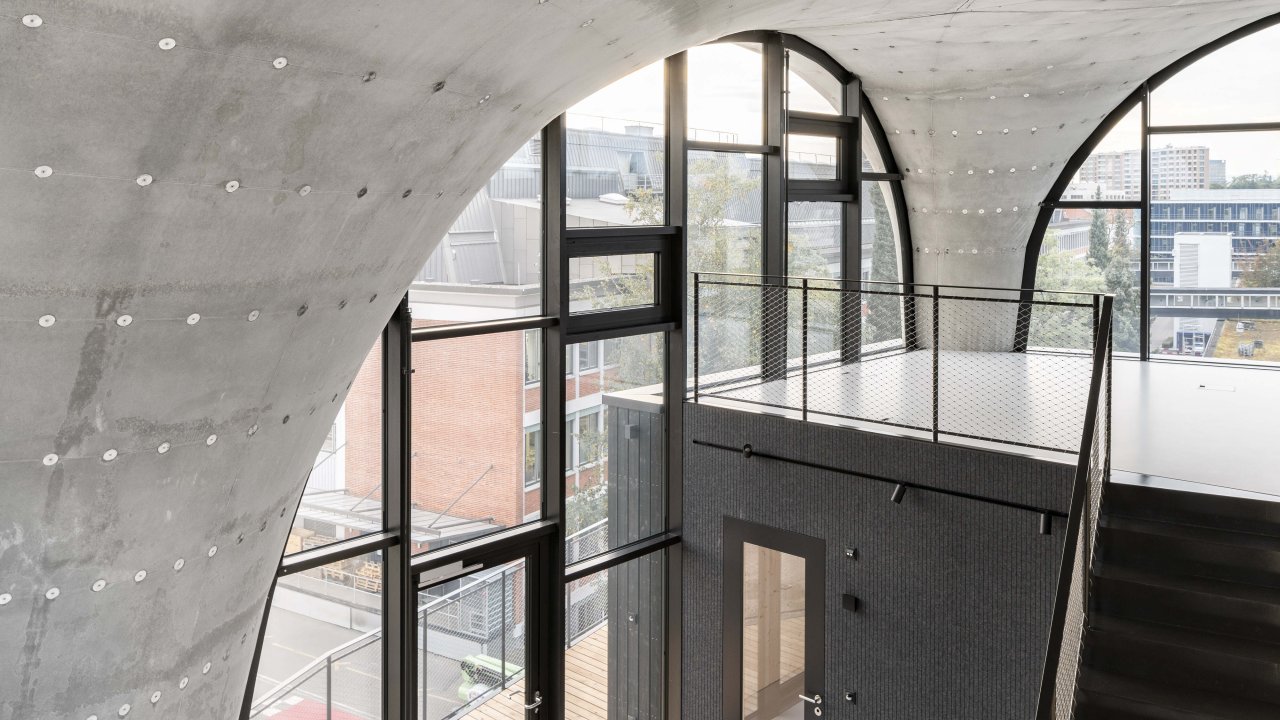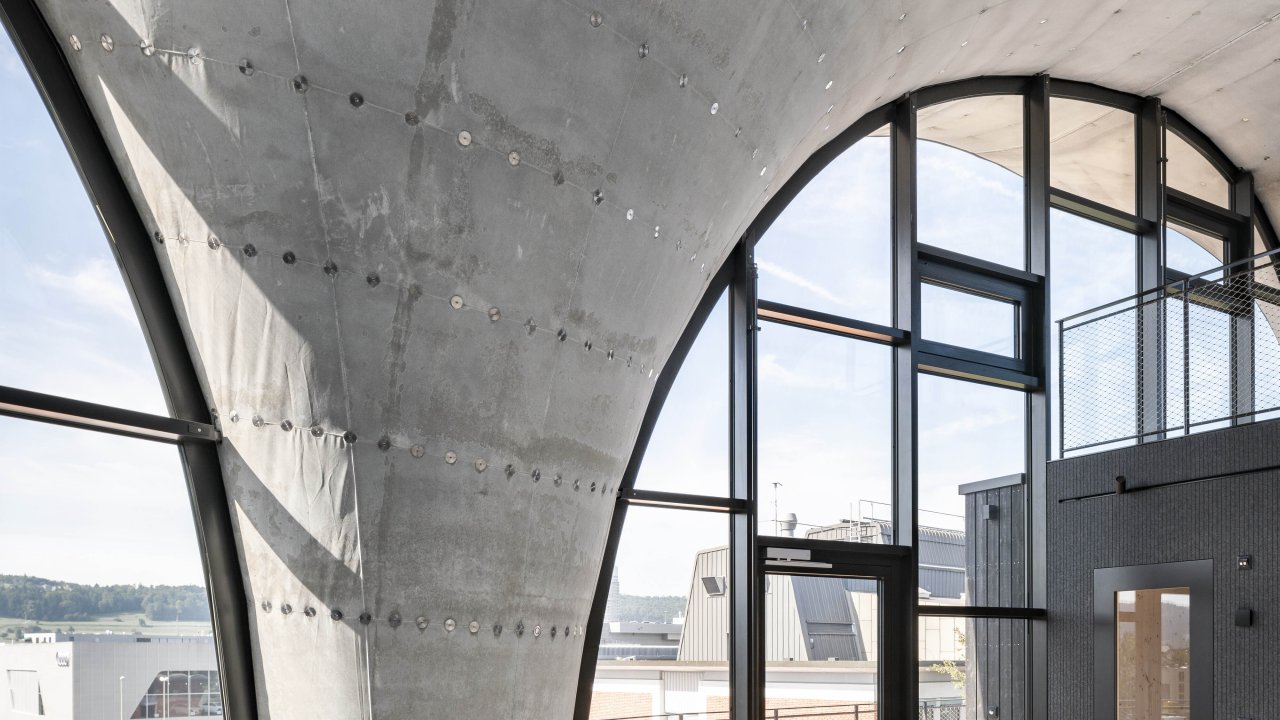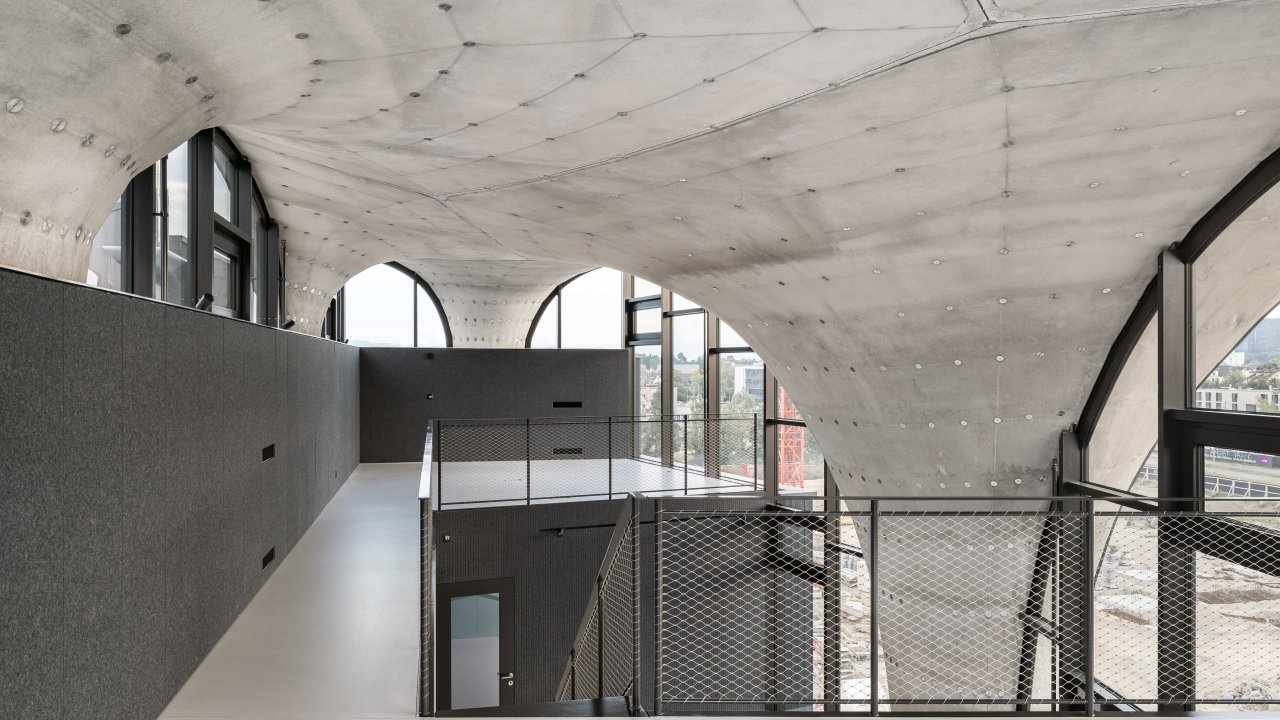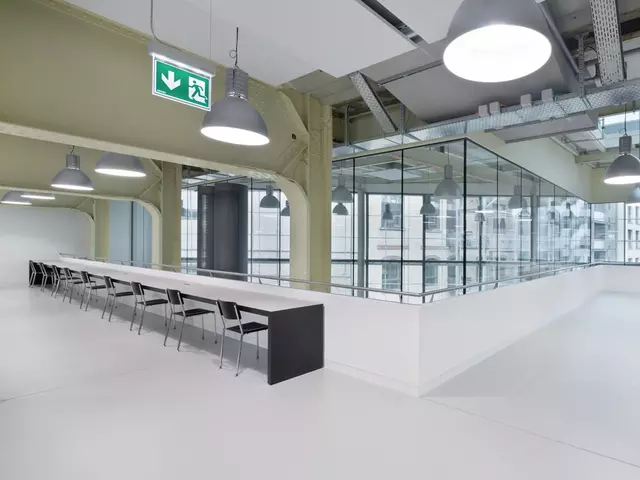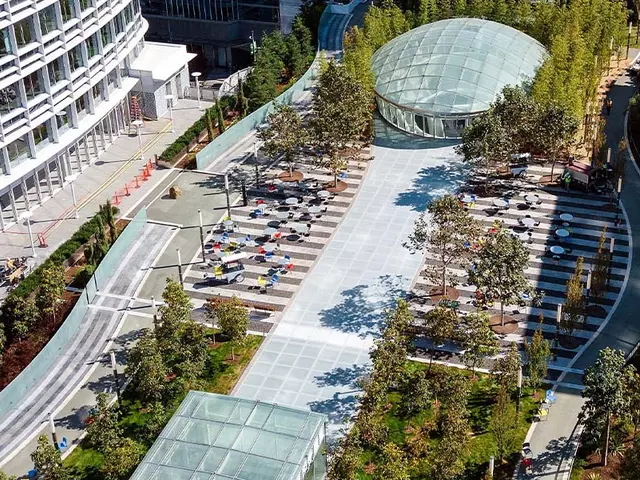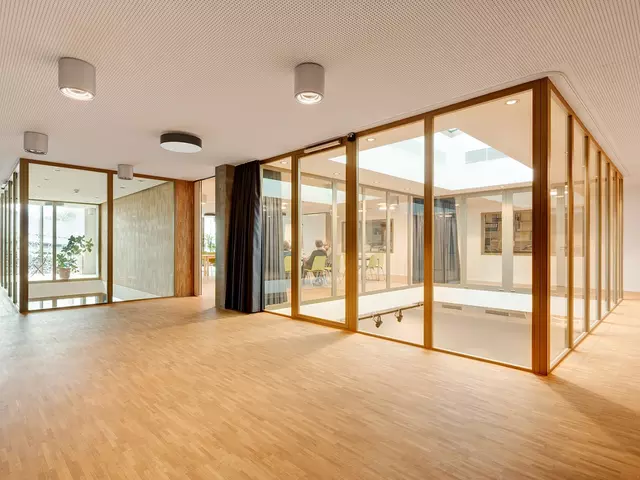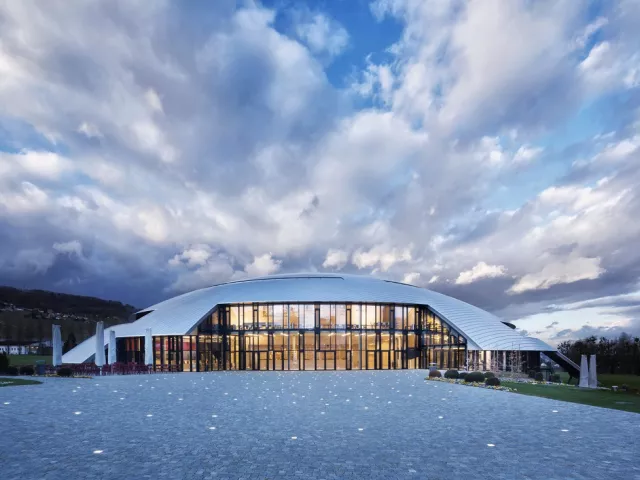HiLo NEST Switzerland
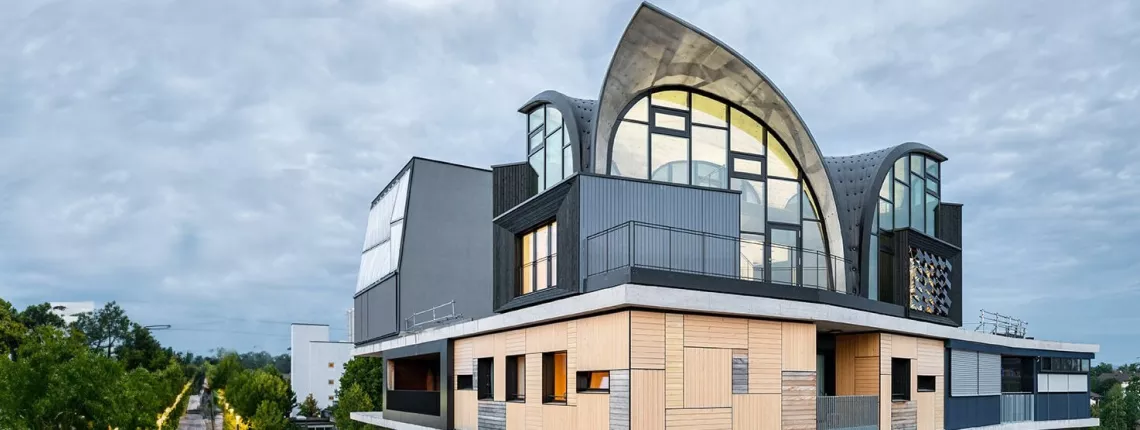
Introduction
HiLo is pursuing the principle of "High Performance – Low Emissions“ and demonstrates a lightweight design, with its innovative construction and a self-learning building technology. The HiLo building unit on the roof of the university ETH Zurich’s NEST research building in Dübendorf, Switzerland has a distinctive characteristic such as a delicate, curved concrete roof and highly developed building technology. The two-storey building module was planned and built with the latest design and manufacturing methods.
Significant elements of the construction principle in the HiLo unit are, in addition to the conservation of material, the reduction of emissions and energy requirement. This is achieved through a combination of different measures, among which is the use of innovative components of the building technology which efficiently regulate the indoor climate. These include an adaptive solar facade developed especially for the HiLo unit, made from photovoltaic modules.
Electrochromic glazing by SageGlass, which regulates the brightness in the building and serves as solar and heat protection at the same time, were installed. Where fire protection was required due to the proximity to other buildings, fire-resistant glazing with thermal insulating glass units in the form of CONTRAFLAM 30 Climatop triple glazing was used, to provide a high degree of comfort and safety with minimal energy consumption.
Products used
CONTRAFLAM 30 CLIMATOP
Thermal insulating glass unit, custom-made for the curved facade, triple glazing.
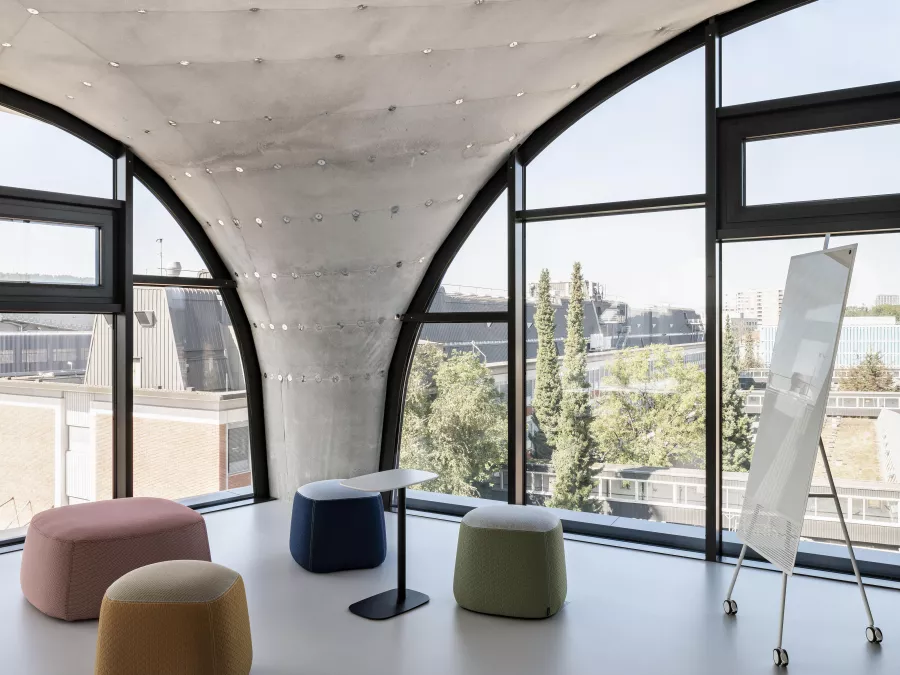
Key achievements
- Due to the proximity to other buildings, our CONTRAFLAM fire-resistant glazing were installed.
- The specific make-up of our CONTRAFLAM 30 Climatop fire-resistant glass is a great multifunctionality that gives excellent thermal insulation properties.
- The fire-rated glass partitions offer a clear view from the university to the Zürich area landscape.
Key challenges
- Ambitious project, geometrically complex.
- Proof that a high-tech eco-concrete project can be beautiful thanks to architectural materials used.
- The individual glass was directly adapted with different geometrical shapes to a façade with a curved roof.
- Provide a high degree of comfort and safety with minimal energy consumption.
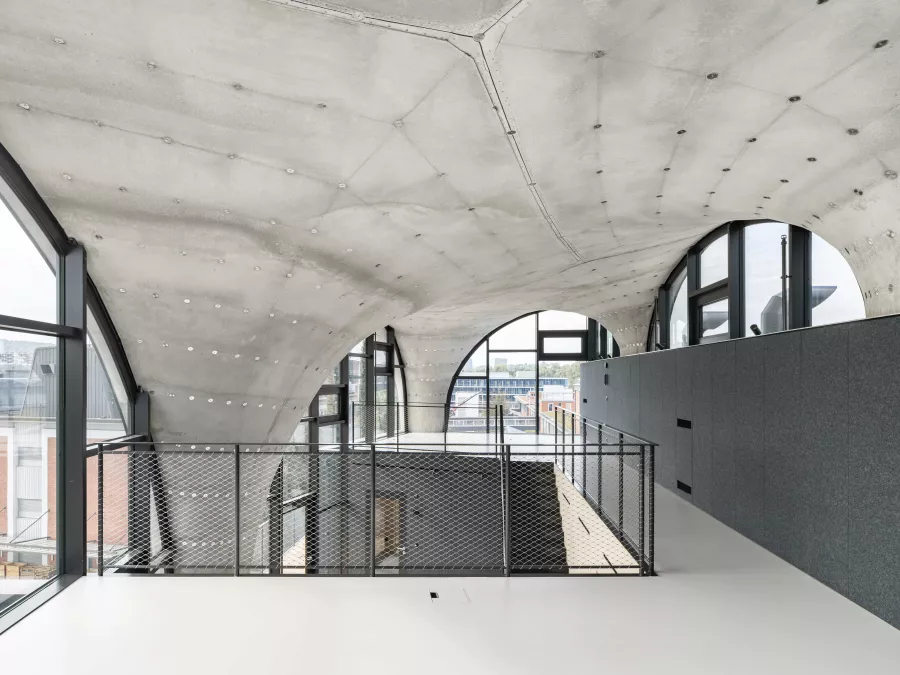
Stakeholders
Vetrotech Saint-Gobain
ETH Zürich
Roman Keller
Forster Profilsysteme AG
